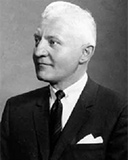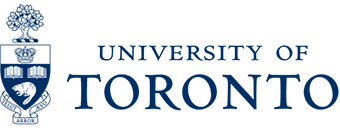Dr. Campbell was born in Toronto. After attending the University of Toronto Schools, he entered the University of Toronto medical school, concealing the fact that he was only 16. Despite this being discovered, he was allowed to continue, and he graduated with his M.D. in 1936 at age 21.
Due to his age, he could not get a position in Toronto, so he worked for some time as a locum tenens in Muskoka and in Bala, Ontario. He also spent a considerable period studying anatomy and physiology at the Banting Institute. During his years as a practicing surgeon, his knowledge of surgical anatomy was legendary.
After first considering going into pathology, he entered general surgical training. He was immediately appalled by the mutilating procedures with horrendous healing problems, equally horrendous scarring, and loss of function he encountered daily. This inspired him to pursue a career in plastic surgery. He started his training in Toronto with Dr. A. W. Farmer, Canada’s second plastic surgeon, and then went on to work with the famous Dr. Robert Ivy in Philadelphia.
When WWII began, he was still in Philadelphia. He was shocked by American isolationism and resolved to return to Canada to join the armed forces. On his return, he found that there was little action taking place, and that if he wanted to really do something positive, it was necessary to do it on one’s own. So he and his wife Ruth set off for England as passengers on a leaky old cattle boat and experienced a very rough passage during which Mrs. Campbell suffered a fractured nose when the ship was in a storm. On his arrival, he joined the Emergency Medical Services and had many adventures with them, while he became a first-class trauma surgeon. His wife went into war work as well.
When the Canadian forces arrived in England, he transferred to the Royal Canadian Army Medical Corps. He spent the remainder of the war with them, treating many complex wounds and devising new treatment methods. For instance, he was doing toe-to-thumb transfers in 1944! He was a member of the elite army plastic surgery team at Basingstoke, U.K., which included Dr. Stuart Gordon, Canada’s third plastic surgeon.
At war’s end, he returned to Toronto and, after working at Toronto General Hospital and Wellesley Hospital, established the plastic surgery service at St. Michael’s Hospital, where he served for many years.
He quickly established a reputation as an innovator and a fine teacher. He had the ability to see through superficialities and get to the root of a problem. His theories on muscle co-ordination in the face and back were his favourite topics.
He was known for his many ’Hoylisms.’ To name a few, “do what you know first,” “always save something to sew to,” “always remember the muscle balance.”
He practiced spinal manipulation on his patients with considerable skill and success, and all of his residents were required to learn the technique. He not infrequently practiced hypnotism as well.
He saw very early that many of the surgical procedures done in hospitals did not necessarily require full hospital facilities. With this thought in mind he established the Institute of Traumatic Plastic Restorative Surgery in Toronto in 1956, where he performed surgery on an outpatient basis that had formerly been done only in hospital. This was truly radical thinking at that time. This new establishment was the precursor of the many such facilities we see today.
Dr. Campbell was not a large man, but he was possessed of considerable courage. On one occasion, he talked a suicidal army veteran into peacefully surrendering a loaded shotgun, and on another, single-handedly disarmed and subdued a violent patient who was threatening to kill him with a crossbow, which he had aimed at his head. The latter event occurred when he was 72 years old!
Dr. Campbell was associated with Branson, Humber, Peel Memorial, Doctors and Central Hospitals as well as St. Michael’s. He was a consultant to the government of Costa Rica on health planning.
He was also a highly successful cattle farmer and operated a large and efficient dairy farm north of Toronto.
He was one of the twelve founders of the Canadian Society of Plastic Surgery in 1947, and its eleventh president. While in medical school, he had been a member of the Tau Omicron chapter of Phi Chi fraternity. When the chapter closed, the remaining chapter funds were given to Dr. Campbell in trust. He invested the money and, like all of his ventures, the result was a profitable one. He turned the funds over to the University of Toronto in 1982 to establish the Tau Omicron Phi Chi Visiting Professorship and the Hoyle Campbell Lectureship.
Dr. Campbell was one of the most innovative, visionary and skilled surgeons, as well as one of the most charismatic ones in the history of Canadian plastic surgery. He was always happiest when he was teaching and working with young surgeons. It is thus most appropriate that his name lives on in association with this professorship.
Dr. Campbell manifested an irrepressible enthusiasm, and met every aspect of life as a welcome challenge. His attitude is well expressed in these few lines of Eastern philosophy by the sixth century poet Kalidasa, which he often quoted:
Look to this day, for it is life.
In its brief course lie all the verities
And realities of our existence.
The bliss of growth, the glory of action and
The splendour of beauty,
For yesterday is but a dream and tomorrow
Is only a vision
But today, well lived, makes every yesterday
A dream of happiness
And every tomorrow a vision of hope.
Look well, therefore, to this day.
Written by Leith G. Douglas MD, 5 March 2008


